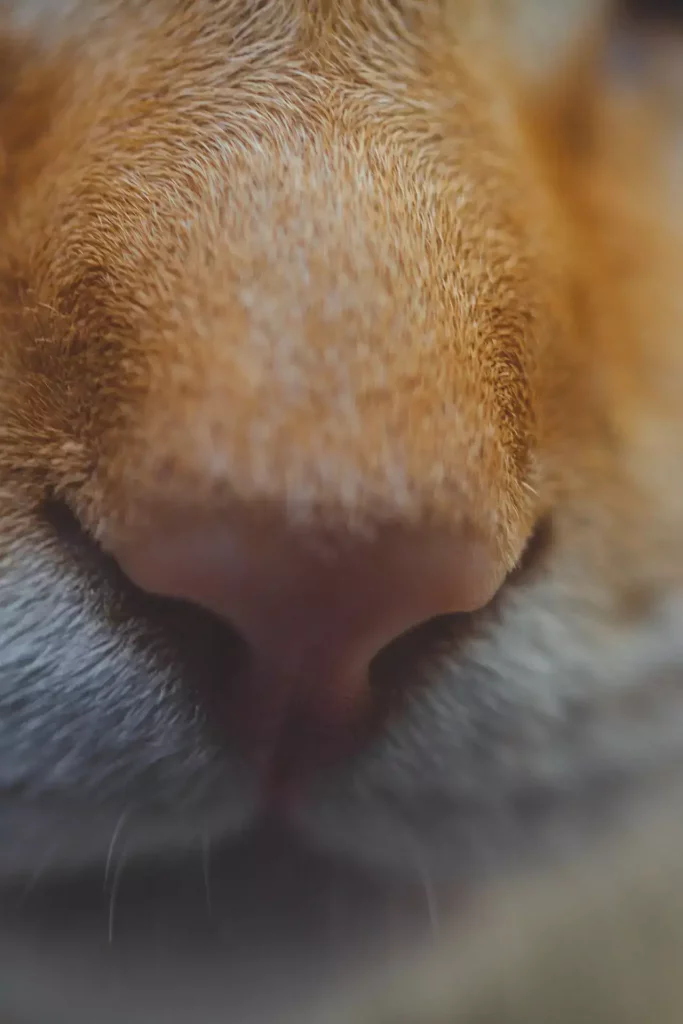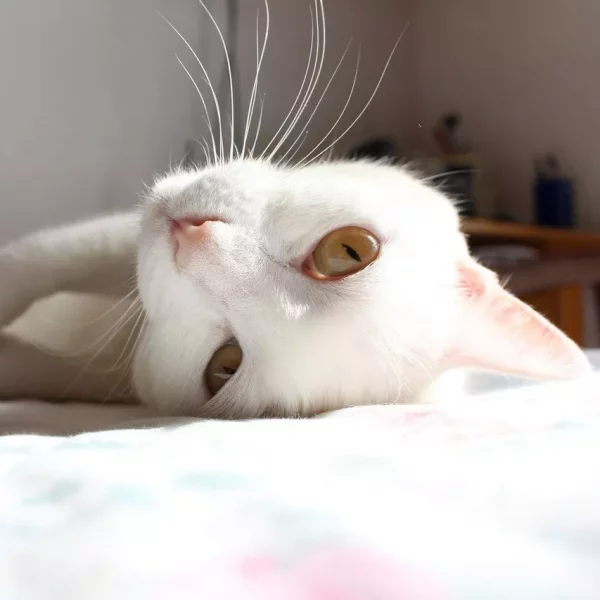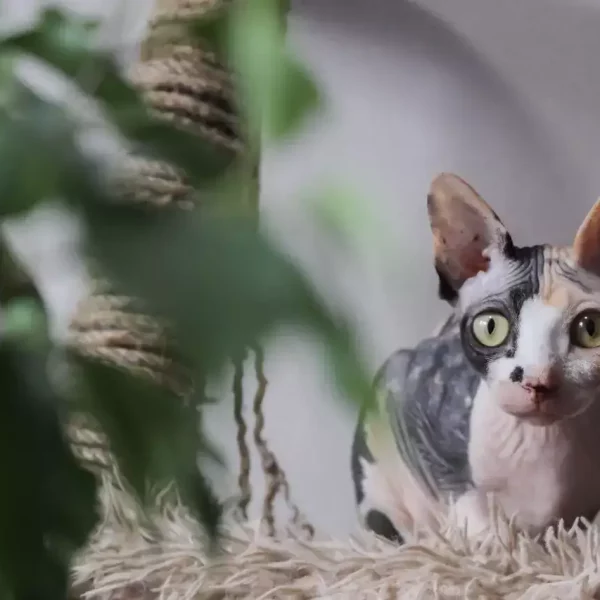Cat noses come in all sizes and colors from black to pink and from really small to wide.
And while they can be so different in appearance they all share the same function, to enrich your cat’s life with a great sense of smell.
In order to do that a cat’s nose should be wet and moist to the touch but is this really the case?
Should A Cat’s Nose Be Wet Or Dry?
Cat noses are actually supposed to be cold and moist with a temperature of about 101. The coldness improves their ability to navigate their surroundings and regulates their body temperature.
News research however found that the nose is unlikely to play a big role in regulating body heat due to its small size, disproving previous theories.
They suggest that it helps cats sense faint heat sources even five feet away.
The tip of a cat’s nose is considerably wetter than its ambient temperature making it sensitive to radiating heat.
Cat noses are much wetter than herbivores’ so this sensory function may serve as a tool for better hunting rather than just regulating the body temperature.

The fact that the nose always stays wet, makes it incredibly ineffective in dissipating surplus body heat compared to the tongue which is always wet and warm.
To keep it wet, your cat has to constantly apply moisture to his nose.
The moisture will then evaporate and keep the nose cool similar to what your cat is trying to achieve with panting.
This enables your cat to have a wetter nose even on hot days.
Cat noses are not inherently cold but what happens if your cat’s nose feels suddenly warmer than usual?
Should a Cat’s Nose Be Dry?
A cat’s nose shouldn’t be warm for an extended amount of time but hourly fluctuations in temperature are normal and not necessarily an indicator of your cat’s health.
This means that a healthy cat’s nose could be warm while a sick cat’s nose could be cold and wet.
It’s always important to look at your cat as a whole and evaluate his health based on all of his symptoms.
If your cat has a fever, is vomiting, or feeling lethargic, it’s important to bring him to the vet for a check-up.
Rather than the temperature and moisture, focus on the skin around the cat’s nose.
If you see lumps, swelling, or sores, it’s better to have a professional look at it.
Clear discharge is completely normal to come out of your cat’s nose but you should keep an eye out for pus, blood, and thick mucus.
These could be caused by inflammation, tumors, allergies, and much more.
What Does It Mean When a Cat’s Nose Is Wet
Cat noses are usually wet as scent particles are much more likely to stick to wet surfaces than to dry ones helping your cat to gather more information from their environment.
The linen of the nose has special glands that produce mucus throughout the day.
You can observe your cat licking his nose multiple times per hour which distributes the mucus and keeps the nose moist.
However, cat noses are not wet all the time.
If your cat hasn’t been able to lick his nose, for example during his sleep, it will feel much drier.
This is no cause for concern and your cat will wet his nose again after waking up.
A long walk outside or an extensive play session can also leave the nose quite dry especially if it’s on a hot or very cold day.

In the warmer months, you should watch your cat’s drinking habits and carefully monitor his nose for any signs of dehydration.
Although moisture greatly improves your cat’s olfactory abilities, a lack of it doesn’t necessarily mean that your cat is sick.
Signs like dryness or cracking can be symptoms of underlying health issues but oftentimes your cat just needs a good moisturizer.
Keep in mind that some cat breeds have drier noses than others.
This may include brachycephalic breeds as they often have difficulty licking their noses.
Other breeds like the Lhasa Apso are prone to blocked tear ducts which also results in a dry nose.
Are Kitten Noses Supposed to Be Warm?
Kitten noses are not supposed to be warm and they also are not an indication of their body warmth which should be measured using a human rectal thermometer.
Newborn kittens are actually not able to regulate their body temperature and rely on the warmth given by their mother and littermates.
During the first week, a kitten should have a temperature of about 94-97°F.
They should be a few degrees warmer during the second and third weeks (97 to 100°F).
Kittens reach their adult body temperature during the fourth week.
It’s very important to closely monitor a kitten’s temperature to find a “normal” range for each kitten as they can be slightly different.
Young kitten are also more susceptible to fever and hypothermia which both require veterinary attention.
A kitten, that is still living with his littermates and mother, can have a warm nose due to sleeping, playing, or simply burying the nose in his mother’s fur.
If you have brought a kitten home with a warm nose this doesn’t necessarily mean that he is sick.
Kittens are always playing, exploring, and napping so a warm and drier nose is not a cause for concern if he is not displaying other symptoms.
Cat Warm Dry Nose Lethargy
If your cat has a warm, dry nose and is feeling lethargic, the symptom you should be focusing more on is definitely lethargy.
Every human and cat have days where they feel a little down and sleepy but persistent lethargy is a cause for concern.
Your cat might not be interested in things he usually enjoys (playing, going for walk, sniffing) and refuses to get out of bed.
He might also feel very weak and may even refuse to eat and/or drink.
Lethargy can have a ton of causes including pain, disease, medication, toxin, infection, etc.
It’s impossible to find the underlying issue without a vet exam and labwork.
Bring your cat to the vet as quickly as possible in case your cat has eaten something he is not supposed to or he is suffering from life-threatening diseases or infections.
Disclaimer: This blog post doesn’t substitute veterinary attention and does not intend to do so. If your cat shows any signs of illness, call your vet immediately.



Leave a Comment